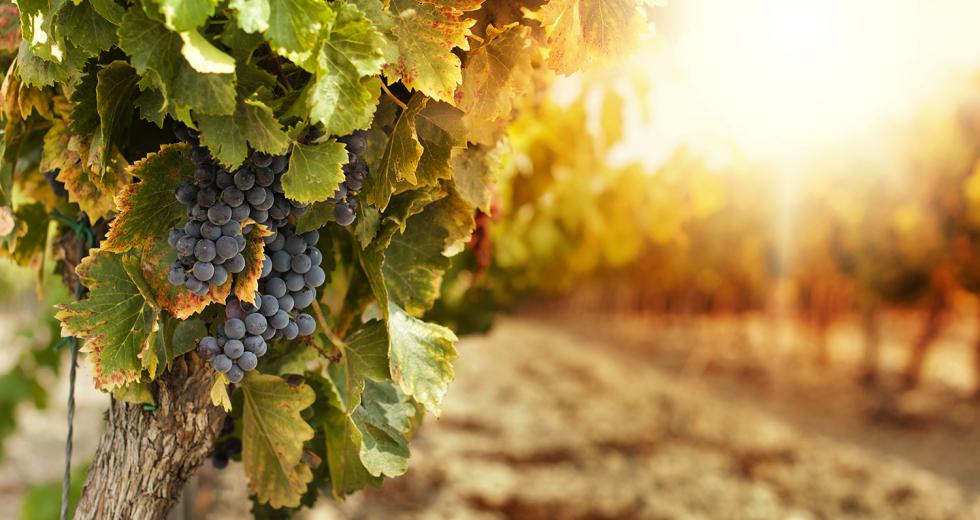You might say the old grapevines look otherworldly. With their contorted limbs and thick trunks, these Zinfandel vines look more like squat alien-trees, twisting up out of a sandy 3-acre spit of land in southwest Lodi. “Look how this vine is growing here,” says Stuart Spencer, owner of St. Amant Winery. He’s standing in the dirt at nearby Marian’s Vineyard, pointing to a vine with a hole as big as a fist. “The vine just splits over time.”
Even with cracks and cavities, the old vines stand strong at this heritage vineyard, planted in 1901. They don’t need a trellis system for support. They don’t need constant supervision or machines to help them grow. With more than a century’s worth of experience, these gnarly vines (on their original roots) maintain themselves, producing the right balance of leaves and fruit without much manipulation.
“With young vines, if there is not enough vegetation, the grapes won’t ripen,” says Spencer, who picks 18 to 30 tons of grapes a year for St. Amant. “But the neat thing with these older vines is they self-regulate naturally.” But these ancient vines can’t talk, so most people don’t know heritage vineyards like St. Amant have been thriving since the late 1800s all over the Lodi American Viticultural Area, particularly on the sandy loam of Lodi’s historic Mokelumne River sub-AVA. To spread the word, sommelier Randy Caparoso, a Lodi wine expert, brought six local winemakers together in 2012 with a charge: Go native.
And so the Lodi Native project was born. This year, six more local vintners accepted the challenge to produce all-natural wines that would highlight the unique characteristics of a specific Zinfandel vineyard.
“We have a true treasure trove of old heritage vineyards,” says Spencer, one of the original six. “And to a great extent they have been a big secret for most of the wine world.”
The project calls for certain restrictions to the winemaking process: native yeast only, no new oak, no added sugar, no added tannin, no filtering, etc. Basically, vintners can’t tamper with the Zinfandel the same way they would a commercial wine. And there are risks. Without additives, the wine could stop fermenting halfway through, or low-quality grapes might invite bacteria that spoils the batch. But when done right, this minimalist approach creates a true vineyard-in-a-bottle experience.
“There’s a lot of things you do to produce a commercial Zinfandel. We’ve decided to throw all that out the window and do as little as possible,” Caparoso says. “You really are tasting a pretty close approximation to what an actual vineyard tastes like.”
In this project, the wine has always been secondary. The heritage vineyards are the real winners here, relics passed down through generations, symbols of endurance and distinction. Their deep-rooted history has attracted investing vintners from outside Lodi, including Tegan Passalacqua, the winemaker and vineyard manager at Turley Wine Cellars in St. Helena, and Morgan Twain-Peterson, the owner and winemaker at Bedrock Wine Co. in Sonoma. With more local winemakers hopping on the Lodi Native train, 2015 is shaping up to be their biggest showcase yet.
“We have a true treasure trove of old heritage vineyards. And to a great extent they have been a big secret.” Stuart Spencer, owner, St. Amant Winery
Taste the Vineyard
When you think of Lodi Zinfandel, you probably think of something sweet with a lot of alcohol, heavy on the fruit. This focus on fruit flavor is common, Caparoso says, not just in Lodi, but throughout the country.
“The way American wine is made, there is an emphasis on varietal character, whether it’s rich and apple-like or pear-like,” he says. “The European model is different. You’re looking for qualities other than fruit to identify regions.”
But you’d be hard-pressed to identify a region if you’re drinking wine made from younger vines. You’ll get the fruit, but not so much the character that comes from veteran plants, which have spent decades adapting to the conditions of their environment. At any given vineyard, factors like soil type, water levels, climate and mineral content all influence the taste and texture of the grapes.
Lodi is differentiated by its west side and east side (see sidebar). The climate also plays a role. Because of its location in the Delta, Caparoso says, Lodi maintains a mild Mediterranean climate on par with coastal regions. And of course, there’s all the Zinfandel — which make up about 38 percent of all planted Zinfandel in California. The Lodi Native project was created to bring out the subtle nuances of each vineyard in all its raw, unadorned glory.
Still, not every winemaker was in favor of the hands-off approach.
“It was, ‘Don’t do this, don’t do that,’” says Tim Holdener of Macchia Wines, who has a background in brewing. “It seems like every time we had a meeting, we were taking one more winemaking tool off the table. To give up that control and let Mother Nature take control was a struggle for me.”
As for the flavor? Holdener thought his native wine was going to be horrible, not worth bottling. He didn’t like it in the winter, didn’t like it in the spring. But when summer rolled around, he began to enjoy it. Others did too. He has already started processing his 2014 vintage for the next round of Lodi Natives.
“I went into it kicking and screaming,” he says. “It’s very much like handcuffs on the winemaker. But now, I use the techniques regularly. It was nice to be exposed to that.”
Recommended For You
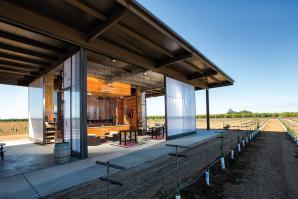
A Mature Palate
m2 Vintners has a laid-back vibe and high-end digs, reflecting the new image of Lodi wines
At the crush pad of a custom-built winery, the 6-foot-4 winemaker in tie-dye socks shuts off the forklift, realizing he missed a call.
“I didn’t hear my phone ring,” says Layne Montgomery, 55, general manager and founding partner of m2 Vintners Inc. in Acampo.
“It’s harvest,” jests one of his volunteers. “Who has time for a phone?”
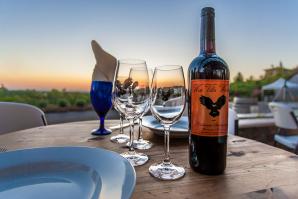
Wine Winner
How Dr. Grover Lee went from the pharmacy to the vineyard
Imagine you’re a successful businessman, but what you really want to be is a professional baseball player. You’re so sure of yourself that you begin spending nights and weekends studying and training as if Major League Baseball will soon be calling. And then they actually do, and at your first at-bat, you clear the bases.
That’s pretty much how things happened when Granite Bay pharmacist Dr. Grover Lee decided to become an award-winning winemaker.
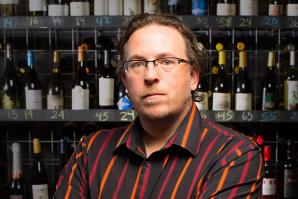
The Wine on Miracle Mile
Sacramento sommelier Paul Marsh joins Stockton’s business renaissance
For the past 10 years, Paul Marsh has pledged himself to the pursuit of wine. In Chico, he learned the intricacies of its fruit by planting and harvesting a vineyard. With Kendall Jackson, he learned to sell. At The Firehouse Restaurant in Old Sacramento, he was educated on the finer points of building a wine collection in a hospitality setting, and he became a certified sommelier.
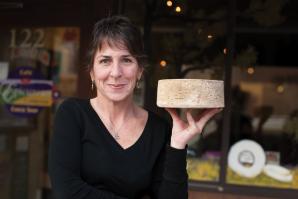
Have Cheese Will Travel
A ‘choose your own adventure' map to NorCal's finest fromagers
In the past two decades, bucolic Sonoma and Marin counties have been at the center of a cheese renaissance that has seen the rise of dozens of artisan and farmstead products, including cheese made from the milk of sheep, goat and water buffalo. With nearly 30 cheesemakers and creameries opening their doors to visitors, exploring curd culture has never been easier.



